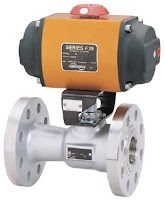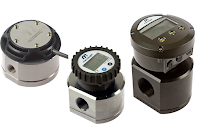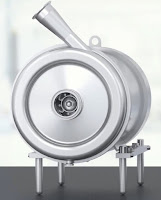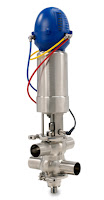 |
| Operation rack and pinion actuator. |
Rack and pinion actuators convert linear movement of a driving mechanism to provide a rotational movement designed to open and close quarter-turn valves such as ball, butterfly, or plug valves and also for operating industrial or commercial dampers.
There are three primary kinds of valve actuators are commonly used: pneumatic, hydraulic, and electric.
Pneumatic actuators can be further categorized as scotch yoke design, vane design, and the subject of this post - rack and pinion actuators.
How Rack and Pion Actuators Operate
The rotational movement of a rack and pinion actuator is accomplished via linear motion and two gears. A circular gear, known as a “pinion” engages the teeth of one or two linear gears, referred to as the “rack”.
Pneumatic actuators use pistons that are attached to the rack. As air or spring power is applied the to pistons, the rack changes position. This linear movement is transferred to the rotary pinion gear (in both directions) providing bi-directional rotation to open and close the connected valve.
Rack and pinion actuators pistons can be pressurized with air, gas, or oil to provide the linear the movement that drives the pinion gear. To rotate the pinion gear in the opposite direction, the air, gas, or oil must be redirected to the other side of the pistons, or use coil springs as the energy source for rotation. Rack and pinion actuators using springs are referred to as "spring-return actuators". Actuators that rely on opposite side pressurization of the rack are referred to as "direct acting".
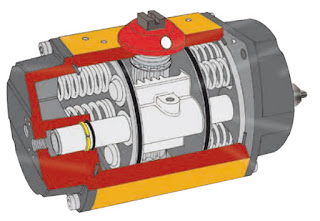 |
| Internal view of rack and pinion actuator |
Most actuators are designed for 100-degree travel with clockwise and counterclockwise travel adjustment for open and closed positions. World standard ISO mounting pad are commonly available to provide ease and flexibility in direct valve installation.
NAMUR mounting dimensions on actuator pneumatic port connections and on actuator accessory holes and drive shaft are also common design features to make adding pilot valves and accessories more convenient.
Pneumatic pneumatic rack and pinion actuators are compact and effective. They are reliable, durable and provide good service life. There are many brands of rack and pinion actuators on the market, all with subtle differences in piston seals, shaft seals, spring design and body designs. Some variants are specially designed for very specific operational environments or circumstances.
Share your process
valve control and automation challenges with application experts, and combine your process experience and knowledge with their product application expertise to develop effective solutions.





